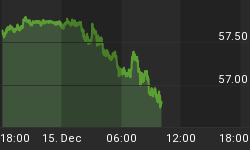A longer dovish Fed is hurting the bullish case for the US dollar
Mr Bernanke surprised the market on 18 September by postponing the tapering process. Notwithstanding the US dollar decline following the announcement, the dovish commitment by the Fed is expected to have further medium-term effect on the greenback. The continuation of the full monthly $85 bn liquidity injection by the Fed and the concerns about the tightening of financial conditions highlighted by the FOMC suggest a significant slower tapering process than previously hinted by Mr Bernanke in June. Indeed, the tapering seems now unlikely to start in October as the Fed will only have one month more of data to assess if the recovery is strong enough to sustain a reduction in liquidity injection. Moreover, the uncertainties linked to the US debt ceiling are also suggesting that the Fed could wait until December before tapering. Furthermore, the likely nomination of Mrs Yellen as the new Fed chairperson strengthens the stance of an ultra accommodative Fed. One could also speculate that the more dovish stance reflects the prospect of a forthcoming Yellen nomination. On the other hand, the European Central Bank (ECB) is still passively removing liquidity through the LTRO repayments. This increasing gap, which could persist for longer than expected in the light of the September FOMC meeting, is supportive for EUR/USD. In the UK, this supportive effect should be less significant as the liquidity remains unchanged through the decision of the Bank of England. Overall, even though the US dollar could receive some short-term support from a potential escalation in the debate surrounding the debt-ceiling, the persistent divergence in liquidity across the Atlantic should remain a supportive factor for EUR/USD in the next few months. In the longer term, we remain convinced that the US is more advanced in the tightening cycle, which should eventually favour a sustainable rise in the USD. However, the recent developments suggests that this time is farther than previously thought.
![]() Forex Weekly Report 23-29 September, 2013
Forex Weekly Report 23-29 September, 2013
















